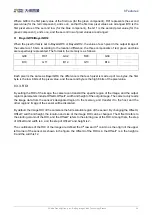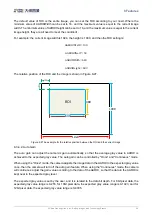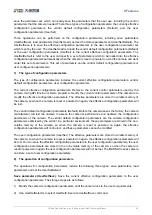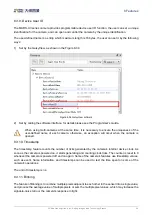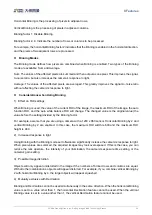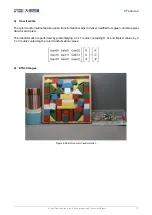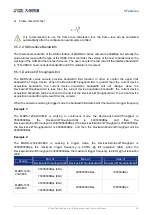
8.Features
© China Daheng Group, Inc. Beijing Image Vision Technology Branch 67
8.3.12. Decimation
The Decimation can reduce the number of sensor pixel columns or rows that are transmitted by the camera,
reducing the amount of data that needs to be transmitted and reducing bandwidth usage.
How Vertical Decimation Works
On mono cameras, if you specify a vertical Decimation factor of n, the camera transmits only every n
th
row.
For example, when you specify a vertical Decimation factor of 2, the camera skips row 1, transmits row 2,
skips row 3, and so on.
On color cameras, if you specify a vertical Decimation factor of n, the camera transmits only every n
th
pair
of rows. For example, when you specify a vertical Decimation factor of 2, the camera skips rows 1 and 2,
transmits rows 3 and 4, skips rows 5 and 6, and so on.
Figure 8-39 Mono camera vertical Decimation
Figure 8-40 Color camera vertical Decimation
As a result, the image height is reduced. For example, enabling vertical Decimation by 2 halves the image
height. The camera automatically adjusts the image ROI settings.
Vertical Decimation significantly increases the camera's frame rate. For details, please refer to the
U3 Frame Rate Calculation Tool
How Horizontal Decimation Works
On mono cameras, if you specify a horizontal Decimation factor of n, the camera transmits only every n
th
column. For example, if specify set a horizontal Decimation factor of 2, the camera skips column 1,
transmits column 2, skips column 3, and so on.
On color cameras, if you specify a horizontal Decimation factor of n, the camera transmits only every n
th
pair of columns. For example, if you specify a horizontal Decimation factor of 2, the camera skips columns
1 and 2, transmits columns 3 and 4, skips columns 5 and 6, and so on.


